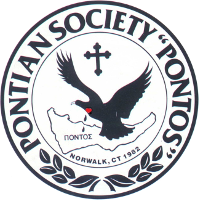 Sinope was a city of ancient Paphlagonia. The time of its foundation is unknown. The first settlers were the inhabitants of Miletus around the 8th century BC, in agreement with the ancient inhabitants. Herodotus considers the Cimmerians to be the first settlers, others consider the Argonauts. The name comes from the mythological daughter of the river Asopos, Sinopi. Sinope was the first Greek colony in Pontus and the starting point of the Hellenization of the coasts there as far as Colchis.
Sinope was a city of ancient Paphlagonia. The time of its foundation is unknown. The first settlers were the inhabitants of Miletus around the 8th century BC, in agreement with the ancient inhabitants. Herodotus considers the Cimmerians to be the first settlers, others consider the Argonauts. The name comes from the mythological daughter of the river Asopos, Sinopi. Sinope was the first Greek colony in Pontus and the starting point of the Hellenization of the coasts there as far as Colchis.
 Trabzon, Kerasounta and Kotyora were colonies of Sinope. During the 5th century it was a member of the Athenian hegemony, and Pericles sent 600 Athenian heirs there, after the liberation of the city from tyranny. Then the city was independent and Xenophon’s “Myrians” passed through it. In 368 BC, was occupied by Datamas, Persian Satrap of Cappadocia, but retained its autonomy. In 183 BC was occupied by Farnakis the 1st who made it the capital of the Kingdom of Pontus.
Trabzon, Kerasounta and Kotyora were colonies of Sinope. During the 5th century it was a member of the Athenian hegemony, and Pericles sent 600 Athenian heirs there, after the liberation of the city from tyranny. Then the city was independent and Xenophon’s “Myrians” passed through it. In 368 BC, was occupied by Datamas, Persian Satrap of Cappadocia, but retained its autonomy. In 183 BC was occupied by Farnakis the 1st who made it the capital of the Kingdom of Pontus.
In this city was born Mithridates the Great who decorated it with temples, galleries, neoria (testimony of Strabo). Finally in 70 BC, it was occupied by the Roman general Lucullus, who also granted it autonomy. In 44 BC, became a final Roman colony with Roman settlers, under Bithynia. During the Byzantine period it was not very important, and it belonged to the Armenian Issue. After the Fourth Crusade it was a matter of contention between the Empire of Trebizond, the Empire of Nicaea and the Seljuk Turks who first conquered it in 1214. From the middle of the 13th century it came under the rule of local Turkoman dynasties. After the fall of Constantinople, Mohammed II the Conqueror conquered it in 1461, on his campaign against Trebizond, and moved its inhabitants to Constantinople to increase its population. In the Ottoman period Sinope belonged to the Eyaleti or Vilaeti of Kastamonu. A notable event of recent times was the naval battle of the Russian fleet with the Turkish one against Sinope on November 30, 1853 at the beginning of the Crimean War, which led to the destruction of the Ottoman fleet and triggered the entry of Britain and France into the war of Russia.
During the Middle Ages, Sinope was under the Diocese of Elenopontos, and in recent times in the Diocese of Amasia. According to the Christian tradition, the first to preach Christianity in the city was the Apostle Andrew who ordained its first bishop, the Philologist. Bishop Phocas is said to have testified here under Emperor Trajan. Later mentioned bishops of Sinope, Proairesios, Antiochus (in the Fourth Ecumenical Council), Sergius (in the Sixth Ecumenical Council), Gregory (in the Seventh Ecumenical Council) and others are mentioned.
The Greek population of Sinope before 1914 was 5,000 and the Turkish 9,000. The Greeks maintained a civic school, a Girl’s School and 3 churches. There were no more than 2,000 Greeks in the suburbs. During the First World War, the Greeks of the city and the surrounding villages suffered many hardships and the survivors migrated to Greece during the two years 1923-1924, during the forced and inhuman exchange of populations, after the Asia Minor catastrophe.
 The land and the place of Sinope and Paphlagonia in general are holy. Examples include Agios Stylianos the Paphlagonian, Agios Mamas, Agia Theodora the Queen of Paphlagonia, Agios Ypatios, Osios Alypios the Kionitis, Agios Filaretos, Agios Ieromartys alias Fokaris and Agios Edoas Fokaris and spirit in favor of the sweetest name of Jesus Christ.
The land and the place of Sinope and Paphlagonia in general are holy. Examples include Agios Stylianos the Paphlagonian, Agios Mamas, Agia Theodora the Queen of Paphlagonia, Agios Ypatios, Osios Alypios the Kionitis, Agios Filaretos, Agios Ieromartys alias Fokaris and Agios Edoas Fokaris and spirit in favor of the sweetest name of Jesus Christ.
